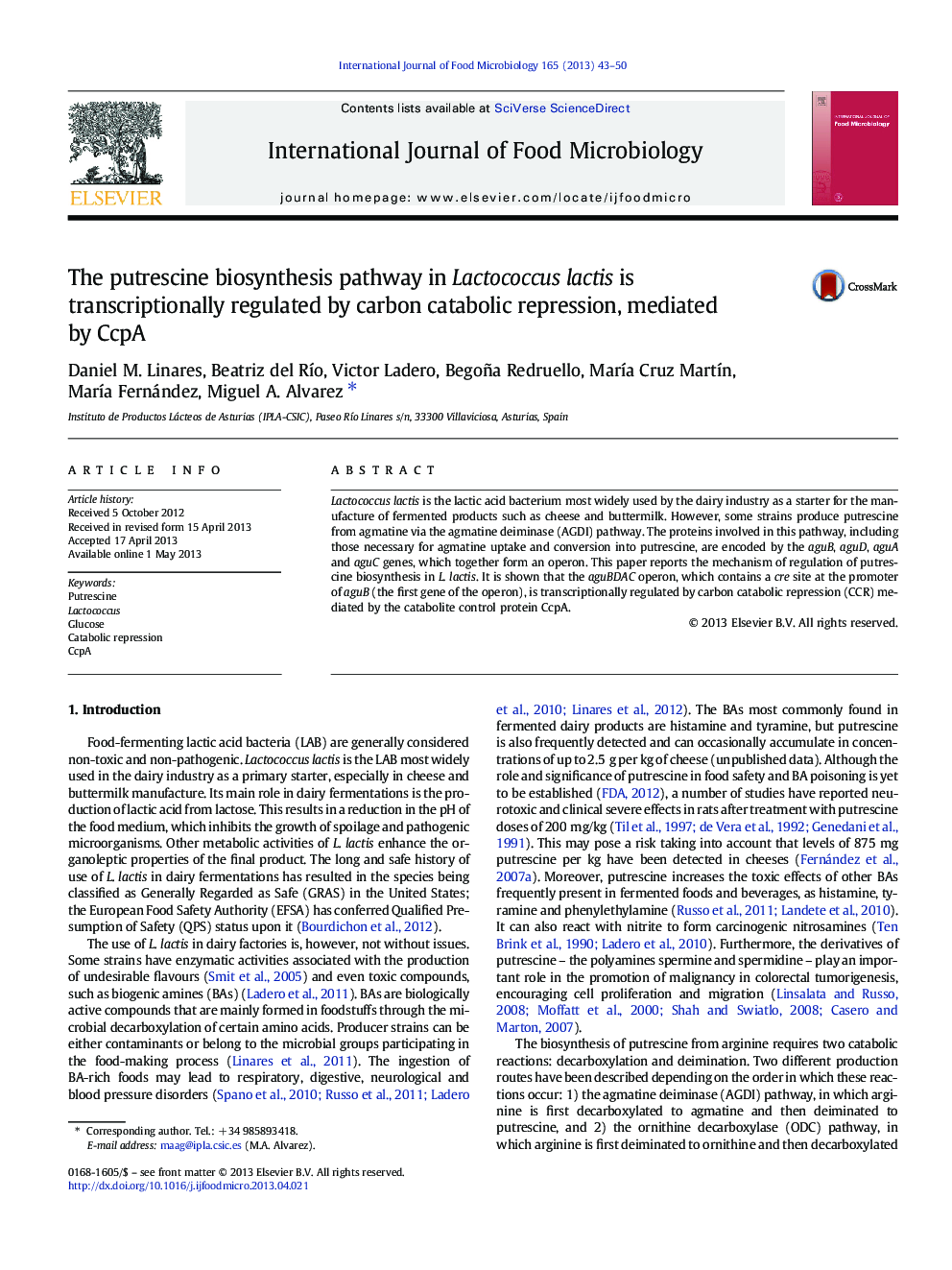| Article ID | Journal | Published Year | Pages | File Type |
|---|---|---|---|---|
| 4367209 | International Journal of Food Microbiology | 2013 | 8 Pages |
•The putrescine production in Lactococcus lactis is inhibited by glucose.•The expression of the AGDI cluster is regulated by glucose concentration.•Glucose catabolic repression is mediated by CcpA at transcriptional level.•Carbon sources different from glucose do not repress putrescine biosynthesis.
Lactococcus lactis is the lactic acid bacterium most widely used by the dairy industry as a starter for the manufacture of fermented products such as cheese and buttermilk. However, some strains produce putrescine from agmatine via the agmatine deiminase (AGDI) pathway. The proteins involved in this pathway, including those necessary for agmatine uptake and conversion into putrescine, are encoded by the aguB, aguD, aguA and aguC genes, which together form an operon. This paper reports the mechanism of regulation of putrescine biosynthesis in L. lactis. It is shown that the aguBDAC operon, which contains a cre site at the promoter of aguB (the first gene of the operon), is transcriptionally regulated by carbon catabolic repression (CCR) mediated by the catabolite control protein CcpA.
